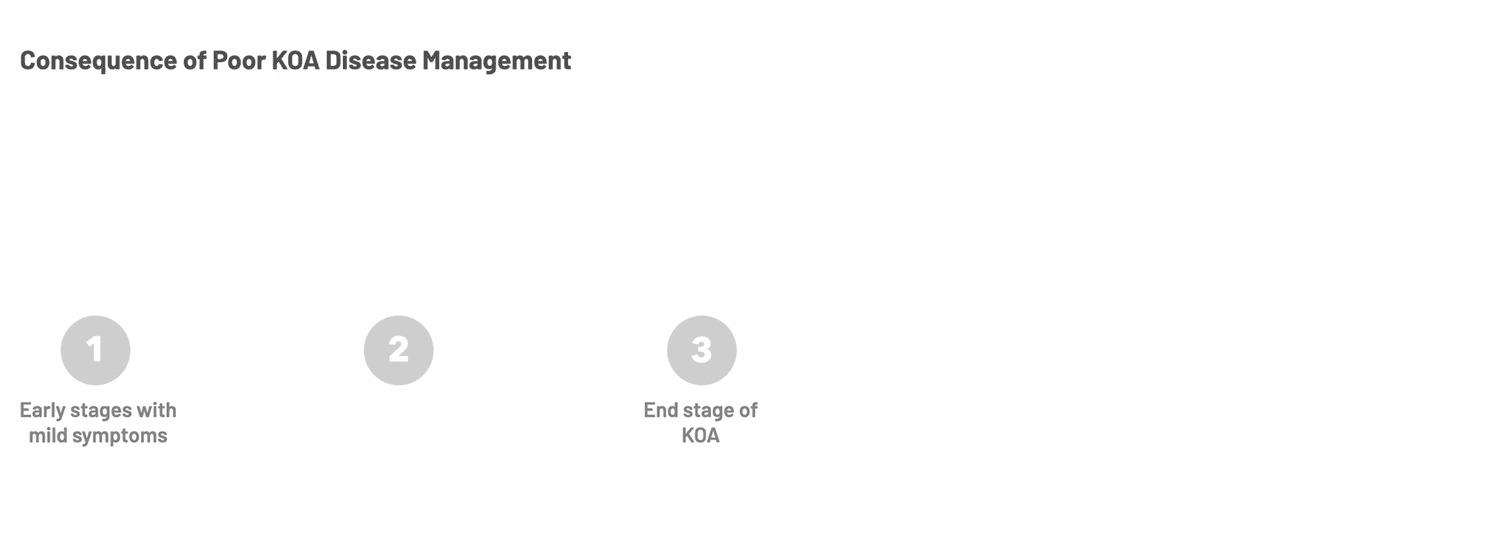
KOA Background
Knee Osteoarthritis (KOA) is a chronic degenerative disease with no cure.
KOA threatens healthy ageing and holistic wellbeing:
-
Physical wellbeing: KOA induces knee pain and disability
-
Mental wellbeing: Patients with KOA are at a higher risk for dementia and depression
-
Social wellbeing: KOA affects mobility for social interaction and self care, causing isolation and reduced self-efficacy


Osteoarthritis (OA) is a highly prevalent age-related disease – It affects >80% people beyond 55 years of age. (Palo, Chandel, Dash, Arora, Kumar, Biswal, 2015)
Growing of aging population in Hong Kong – With 29% population aged 65+ by 2034 (Ultra-aged Hong Kong) (Source: Sau Po Centre on Ageing, The University of Hong Kong (2021))
Prevalence of KOA rises with ageing population — Hence, the potential market will be enlarged in the foreseeable future
Situation in
Hong Kong >

10%
Hong Kong population
suffer from KOA
100,000+
New cases in Hong Kong
in 2019

What is the Problem?
1
Limitation of Current KOA Disease Management
KOA is a multifactorial disease, and an accurate prognostic tool is lacking, resulting in delayed diagnosis.

2
Poor Treatment Outcome + Poor Social Protection
Lack of reliable KOA prognostic tools
→ Ineffective case referrals
→ Non-personalised treatment
→ Lack of comprehensive KOA insurance plan
Lack of self-management support during waiting period and after being discharged

